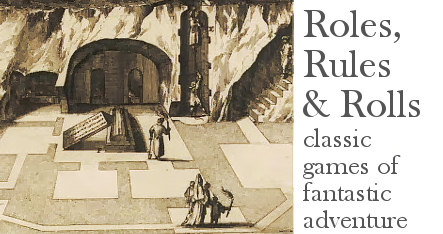But, but, but. The world in this novel - cramped, generic, no great vistas of space or time. If there is a fault of American fantasy authors, at least those who do not do their research like Wolfe and Martin or drink deep of the weird well like Vance and Clark Ashton Smith, it's that they have no sense of the strangeness of history. Their worlds (for example, Donaldson, Eddings, Jordan, Gary Gygax when he turned his pen to fiction, and now Rothfuss) tend to default to a kind of off-the-shelf pre-industrial idyll.
 Although sometimes compared to the cod-archaism of a Renaissance faire, the better comparison of these fantasylands - aptly for the young age of the American republic - is to a nineteenth century sans gunpowder or steam. No feudal ties, ancien regime, or dead hand of the past burden these republican minds in a nominal monarchy. The sparse areas recall the Wild West, complete with the ever-present taverns and bartenders; farmed areas populated by sturdy Midwestern yeomen; cities as Dickensian hives of colorful crooks, pompous officials, and kindly benefactors; Rothfuss' University not too far away, either, from the Tom Brown's School Days playbook more famously cribbed by J. K. Rowling. Chattel slavery stays away from fantasyland, perhaps a wish that by going back to mock-Europe and eliminating black and red people from the narrative, one can also wish away that ugly resonance of American history. (Credit must go to Orson Scott Card for confronting the mythology and history of the American frontier head-on in his Seventh Son series.)
Although sometimes compared to the cod-archaism of a Renaissance faire, the better comparison of these fantasylands - aptly for the young age of the American republic - is to a nineteenth century sans gunpowder or steam. No feudal ties, ancien regime, or dead hand of the past burden these republican minds in a nominal monarchy. The sparse areas recall the Wild West, complete with the ever-present taverns and bartenders; farmed areas populated by sturdy Midwestern yeomen; cities as Dickensian hives of colorful crooks, pompous officials, and kindly benefactors; Rothfuss' University not too far away, either, from the Tom Brown's School Days playbook more famously cribbed by J. K. Rowling. Chattel slavery stays away from fantasyland, perhaps a wish that by going back to mock-Europe and eliminating black and red people from the narrative, one can also wish away that ugly resonance of American history. (Credit must go to Orson Scott Card for confronting the mythology and history of the American frontier head-on in his Seventh Son series.)In other regards the generic fantasyland shies away even from the strangeness of the nineteenth century and before. Yes, the trend has been to write that era's dialogue in the stilted literary language it left behind (David Milch's Deadwood, Charles Frazier's Cold Mountain) but I'm talking about more intangible things. The rules on affectionate relations between the sexes, and within the sexes, were different. Honor and reputation counted for more. But the generic American fantasy writer tries to buy our sympathy by making the main characters "just like us" - or better - in personal and sexual mores.
Now British makers of fantasy worlds grow up in cities and countryside filled with ancient ruins, partitioned by ancient boundaries, ditches, roads and hedges. If anything, their sins of laziness are to view history too much from the modern eye, either gussied up in the twee accents of folklore or vulgarized in the manner of the "Horrible Histories" children's books into a panorama of gross-outs and sadism.
It's hard enough to find good psychological historical fiction - novels that present characters who are sympathetic but also believably alien, like Aubrey and Maturin, Patrick O'Brien's archetypal Tory-Whig duo from the age of fighting sail. But to construct a fantasy that comes with its own psychology -- the casual cruelties of Gene Wolfe under a sun that may go out any moment, for example, or the low-tech future African witchcraft of Nnedi Okorafor - that is what I would most see as worthwhile to read. Anything out there?

































